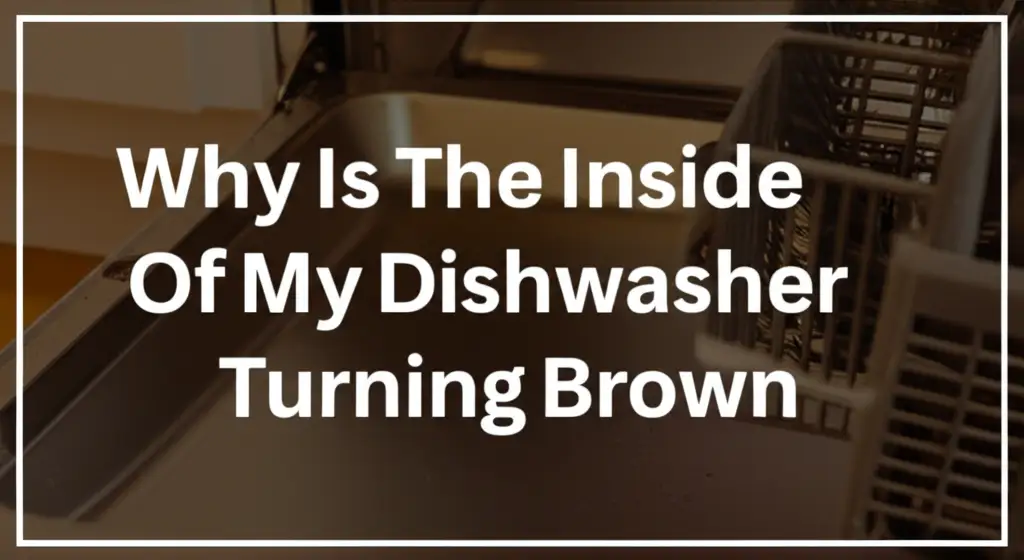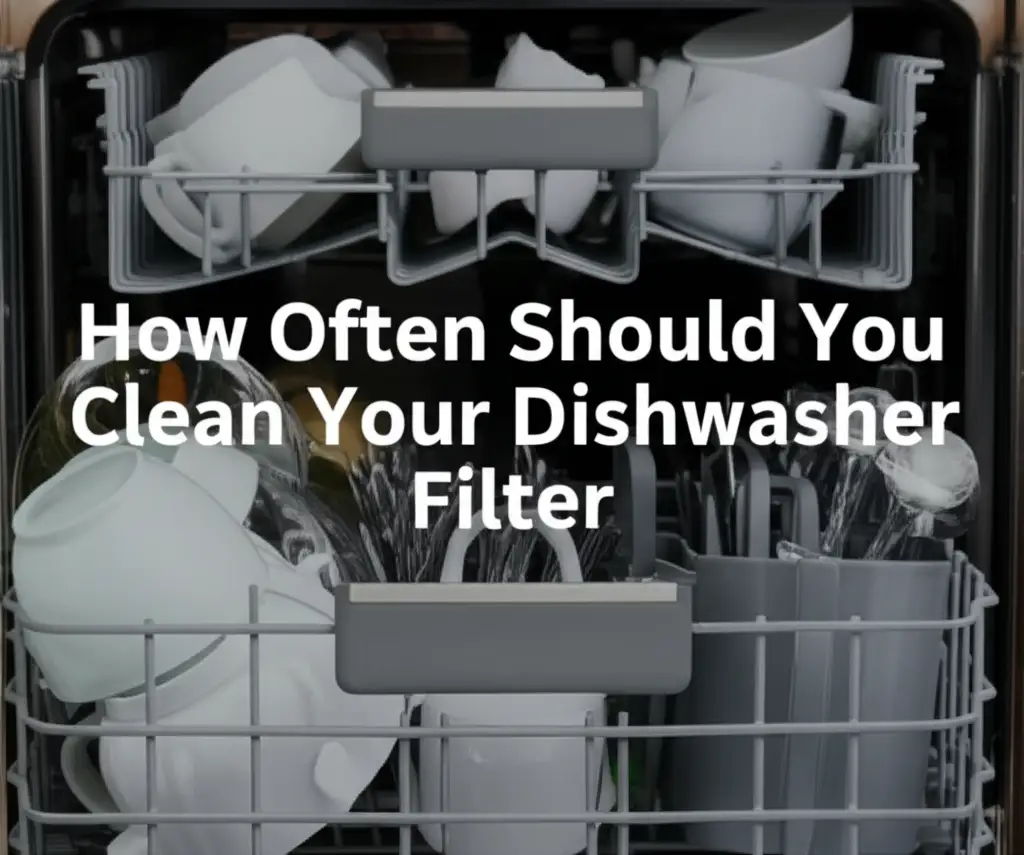· Liora Benning · Appliance Care · 10 min read
How To Remove Stains From Stainless Steel Dishwasher

Restore Your Stainless Steel Dishwasher: Say Goodbye to Stains
Do you see unsightly marks inside your dishwasher? Stains on a stainless steel dishwasher can make your whole kitchen feel less clean. They are a common problem for many homeowners. These marks often come from hard water, food residue, or even rust.
Cleaning these stains can seem difficult. But with the right approach, you can make your dishwasher shine again. I will guide you through effective methods to remove stains from stainless steel dishwasher interiors. You will learn about different stain types and how to tackle each one. This guide also offers tips to keep your appliance looking new.
Takeaway:
- Understand common stainless steel dishwasher stains like hard water, rust, and food.
- Use gentle, effective cleaners such as vinegar, baking soda, and lemon.
- Follow specific methods for each stain type to achieve a clean finish.
- Implement regular maintenance to prevent future stain buildup in your dishwasher.
Clear and Concise Answer:
To remove stains from a stainless steel dishwasher, first identify the stain type. For hard water, use white vinegar or citric acid. For rust, apply a baking soda paste or a specialized rust remover. Food stains usually disappear with a thorough cleaning using dish soap and water. Always rinse well after cleaning.
Understanding Stainless Steel Dishwasher Stains
Your stainless steel dishwasher works hard every day. It cleans your dishes, but it can get dirty itself. Various types of stains can appear on its shiny surface. Knowing what causes these stains helps you choose the right cleaning method.
Hard water stains are very common. They look like white, chalky residue. These spots appear when minerals like calcium and magnesium dry on the surface. These minerals come from your tap water. If you live in an area with hard water, you will see these stains often.
Rust stains are another common issue. They show up as reddish-brown marks. Rust can come from chipped racks inside the dishwasher. It can also come from rusty items accidentally placed in the wash. Sometimes, tiny iron particles in your water supply cause these stains.
Food stains and grease can also coat the interior. Dishwashers clean food, so some residue can build up over time. This leads to a dull appearance and bad odors. Leftover food particles can stick to the stainless steel. This happens especially if you do not pre-rinse dishes. Heat tint stains can also appear. These are subtle, rainbow-like discolorations. They form when stainless steel gets too hot, often without enough moisture. They are less common but can be tricky.
Essential Tools and Gentle Cleaners for Dishwasher Stain Removal
You do not need harsh chemicals to clean your dishwasher. Many common household items work very well. These items are safe for stainless steel and your family. I always start with gentle options.
A microfiber cloth is your best friend. It is soft and will not scratch the stainless steel. You will also need a soft brush, like an old toothbrush, for tight spots. Sponges with a non-abrasive side are also useful. Always avoid steel wool or abrasive scrubbers. They will damage the finish.
White vinegar is a cleaning powerhouse. It helps dissolve mineral deposits and hard water stains. Baking soda is great for scrubbing and absorbing odors. It forms a gentle paste when mixed with water. Lemon juice offers a fresh scent and mild acidity. This helps break down stains. Mild dish soap or a dedicated stainless steel cleaner can also be very effective for general grime. Always check product labels for safety on appliances.
When I clean my dishwasher, I gather everything first. I ensure I have all my tools ready. This makes the cleaning process smooth and efficient. Having the right cleaners means I can tackle any stain type. These simple items will help you get great results.
Step-by-Step Guide: Removing Hard Water Stains and Mineral Buildup
Hard water stains are persistent, but you can remove them easily. They are a common problem in many homes. The minerals leave a cloudy film on your stainless steel surfaces. Do not worry; I have a reliable method for you.
First, empty your dishwasher completely. Remove all racks and silverware baskets. Fill a spray bottle with white vinegar. Spray the entire interior of the dishwasher, focusing on the stained areas. Make sure the vinegar coats all the mineral deposits. Let the vinegar sit for about 15-20 minutes. This gives it time to break down the minerals.
After the vinegar has worked, use a soft cloth or sponge. Wipe down all the surfaces. You should see the hard water stains start to disappear. For tougher spots, you can gently scrub with a baking soda paste. Mix baking soda with a little water until it forms a thick paste. Apply it to stubborn stains. Scrub gently in the direction of the stainless steel grain. Rinse the interior thoroughly with clean water. You can run a short rinse cycle too. This will wash away any remaining cleaner and loosened minerals. You can also clean your refrigerator’s interior using similar gentle methods.
Tackling Rust Stains and Discoloration in Your Dishwasher
Rust stains can be frustrating to see in your stainless steel dishwasher. They often appear as small orange or brown spots. These spots can come from various sources. Sometimes a small piece of rusty metal or a chipped dish rack causes them.
To remove rust, you need a slightly stronger approach. Start by making a paste of baking soda and a little water. This paste should be thick, like toothpaste. Apply this paste directly to the rust spots. Let it sit for about 15-20 minutes. The baking soda is a mild abrasive and helps lift the rust. Gently scrub the area with a soft brush or a non-abrasive sponge. Make sure you scrub with the grain of the stainless steel.
For very stubborn rust, you might need a product containing oxalic acid, like Bar Keepers Friend. Always read the product instructions carefully. Test a small, hidden area first to ensure it does not damage your finish. Apply a small amount to a damp cloth. Gently rub the rust spot until it disappears. After using any cleaning product, rinse the area thoroughly. Wipe it dry immediately to prevent new water spots. A clean, dry surface helps prevent future rust.
Dealing with Food Stains and Odors
Food stains and trapped odors are common problems in dishwashers. Over time, food particles build up. This can make your dishwasher smell unpleasant and look dirty. A clean dishwasher means cleaner dishes.
Start by removing any visible food debris. Check the drain filter at the bottom of your dishwasher. Food can get trapped there. Most filters twist out easily for cleaning. Rinse it under running water to remove all food bits. For stuck-on food, use a soft brush. Then, wipe down the entire interior with a damp cloth and a few drops of mild dish soap. Pay attention to the door seal and edges. Food often collects in these areas.
To tackle odors, baking soda is your best friend. Sprinkle about one cup of baking soda on the bottom of the empty dishwasher. Let it sit overnight. The baking soda will absorb bad smells. In the morning, run a hot water cycle with no dishes. You can also place a bowl of white vinegar on the top rack. This helps deodorize and clean at the same time. These simple steps make your dishwasher smell fresh. They also help prevent new food stains from becoming a bigger problem.
Advanced Stain Removal Techniques and Commercial Products
Sometimes, common household cleaners are not enough. Certain stains need a more specialized approach. This is especially true for stubborn, long-standing stains. I use commercial products only when natural methods fail.
For persistent hard water marks, consider a dishwasher cleaning tablet. These tablets are designed to dissolve mineral buildup and grime. You simply place one in the detergent dispenser or at the bottom. Then, run a hot cycle with an empty dishwasher. These cleaners often contain stronger acids that target tough calcium and lime deposits. Always follow the product instructions carefully. Make sure the product is safe for stainless steel.
For deep-set rust or discoloration, specialized stainless steel cleaners can help. Some products are formulated to gently polish the surface while removing stains. Look for cleaners that specifically state they are safe for appliances. These cleaners often leave a protective layer. This layer can help resist future staining. Remember to apply these products with a soft cloth. Rub with the grain of the stainless steel. This technique helps maintain the appliance’s finish. A good cleaning also includes maintaining often overlooked areas like air vents in your home.
Preventing Future Stains: Maintenance Tips for a Spotless Dishwasher
Prevention is always better than a cure. Keeping your stainless steel dishwasher clean is easy with regular care. Simple habits can save you a lot of cleaning time later. I always emphasize consistent maintenance.
First, always scrape excess food off dishes before loading. You do not need to pre-rinse completely. Just remove large chunks of food. This prevents food from drying onto the dishwasher’s interior. It also keeps your drain filter clear. A clear filter means better water circulation and less debris buildup. Consider rinsing dishes with stubborn, sticky food.
Second, run a cleaning cycle regularly. Once a month, run an empty dishwasher with a cup of white vinegar. Place the vinegar in a bowl on the top rack. This cycle helps flush out minerals and grime. It also helps with odors. You can also use a commercial dishwasher cleaner during these cycles. Using a rinse aid is also very helpful. Rinse aids help water bead off surfaces. This prevents water spots and streaks from forming. They are especially beneficial in hard water areas. Your dishwasher will look great and last longer.
FAQ Section
How often should I clean my stainless steel dishwasher to prevent stains?
You should deep clean your stainless steel dishwasher monthly. This routine prevents hard water buildup and food residue. For daily maintenance, simply wipe down the door and check the filter. Regular cleaning keeps your appliance looking good.
Can I use bleach on my stainless steel dishwasher for tough stains?
No, never use bleach on stainless steel. Bleach can cause permanent corrosion and discoloration. It breaks down the protective layer on stainless steel. Stick to gentle cleaners like vinegar, baking soda, or specialized stainless steel products.
What causes a rainbow-like stain on my stainless steel dishwasher?
Rainbow-like stains, also called heat tint or oxidation, happen when stainless steel is exposed to high heat without enough moisture. They are often caused by excessive heat during drying cycles. You can try to remove them with a specialized stainless steel cleaner.
Is it safe to use lemon juice to remove stains from stainless steel?
Yes, lemon juice is safe and effective for mild stains. Its natural acidity helps dissolve hard water spots. You can rub a cut lemon directly on the stain or use lemon juice mixed with baking soda. Always rinse thoroughly afterward.
My dishwasher smells bad even after cleaning. What else can I do?
A persistent bad smell often means food particles are trapped somewhere. Check the drain filter, spray arms, and door gasket thoroughly. You can also try running an empty cycle with baking soda overnight followed by a vinegar rinse.
Conclusion
Seeing stains on your stainless steel dishwasher can be disheartening. But now you know how to tackle them effectively. We covered common stains like hard water, rust, and food residue. You learned to use simple, effective cleaners. These include vinegar, baking soda, and lemon.
Regular maintenance is key to a spotless dishwasher. Prevent future issues by scraping dishes and using rinse aid. A clean dishwasher not only looks better but also performs better. You can have a gleaming kitchen appliance with little effort. Start your cleaning routine today. Your stainless steel dishwasher will thank you.





